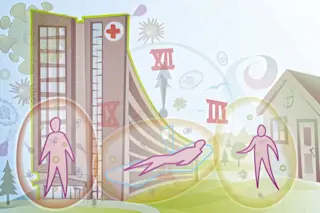This article appeared in the September/October 2020 issue of Discover magazine as "Architecture of Healing." Subscribe for more stories like these.
In February 2013, the Center for Care and Discovery, a 10-story hospital in Chicago, officially opened its doors. As the first patients began to stream in, they brought their microbes with them. They shed bacteria in the lobby, sprinkled viruses around the hallways, deposited fungi in their beds. And they shared these microorganisms with their fellow patients, passing them along to subsequent occupants of their rooms.
When a patient moved into a new room, their body was “actually colonized briefly [by] some of the bacteria in the room — the previous occupant’s bacteria,” says microbial ecologist Jack Gilbert, who led a yearlong study of microbes in the new hospital. And that was true even if the room had been cleaned, he says.
After one day, however, the flow of ...















